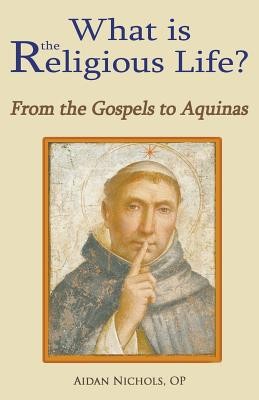
- We will send in 10–14 business days.
- Author: Op Aidan Nichols
- Publisher: GRACEWING
- ISBN-10: 0852448864
- ISBN-13: 9780852448861
- Format: 14 x 21.6 x 0.6 cm, minkšti viršeliai
- Language: English
- SAVE -10% with code: EXTRA
What Is the Religious Life? from the Gospels to Aquinas (e-book) (used book) | bookbook.eu
Reviews
Description
The Year of Consecrated Life has given all Catholics the opportunity to celebrate and reflect on those living out the witness of consecration in the Church-but what is the Religious Life? In this small book Fr Aidan Nichols, OP provides a succinct introduction, showing how Religious Life emerged from the Gospels in the Apostolic Age, and then developed in the world of the Fathers of the Church in Egypt, in Palestine, Syria and Cappadocia and then in the Latin West-through St Augustine, St John Cassian, St Benedict and in the Medieval period St Thomas Aquinas. Roots on which all Religious Life in the modern world draws. There is no forest of trees called 'the Religious Orders of the Catholic Church'. There is only one tree with many branches. The tree is the monastic estate, the branches are the diverse forms of life the members of that estate can take up, combined with the different missions in the Church to which they can be mandated. This has wide-ranging consequences, not least for the later Religious Orders and Congregations, and the most recent 'new movements' of the Catholic Church after the Second Vatican Council, some of which have groups of ascetics at their heart. All need to recover the great lines of monastic spirituality as the common basis of their call in the Church. That is so notwithstanding the specificities of emphasis of this or that founder or the particularities of function they envisaged for their Institute. They should be seen as a single body with a shared contemplative spirit
- Author: Op Aidan Nichols
- Publisher: GRACEWING
- ISBN-10: 0852448864
- ISBN-13: 9780852448861
- Format: 14 x 21.6 x 0.6 cm, minkšti viršeliai
- Language: English English
The Year of Consecrated Life has given all Catholics the opportunity to celebrate and reflect on those living out the witness of consecration in the Church-but what is the Religious Life? In this small book Fr Aidan Nichols, OP provides a succinct introduction, showing how Religious Life emerged from the Gospels in the Apostolic Age, and then developed in the world of the Fathers of the Church in Egypt, in Palestine, Syria and Cappadocia and then in the Latin West-through St Augustine, St John Cassian, St Benedict and in the Medieval period St Thomas Aquinas. Roots on which all Religious Life in the modern world draws. There is no forest of trees called 'the Religious Orders of the Catholic Church'. There is only one tree with many branches. The tree is the monastic estate, the branches are the diverse forms of life the members of that estate can take up, combined with the different missions in the Church to which they can be mandated. This has wide-ranging consequences, not least for the later Religious Orders and Congregations, and the most recent 'new movements' of the Catholic Church after the Second Vatican Council, some of which have groups of ascetics at their heart. All need to recover the great lines of monastic spirituality as the common basis of their call in the Church. That is so notwithstanding the specificities of emphasis of this or that founder or the particularities of function they envisaged for their Institute. They should be seen as a single body with a shared contemplative spirit


Reviews